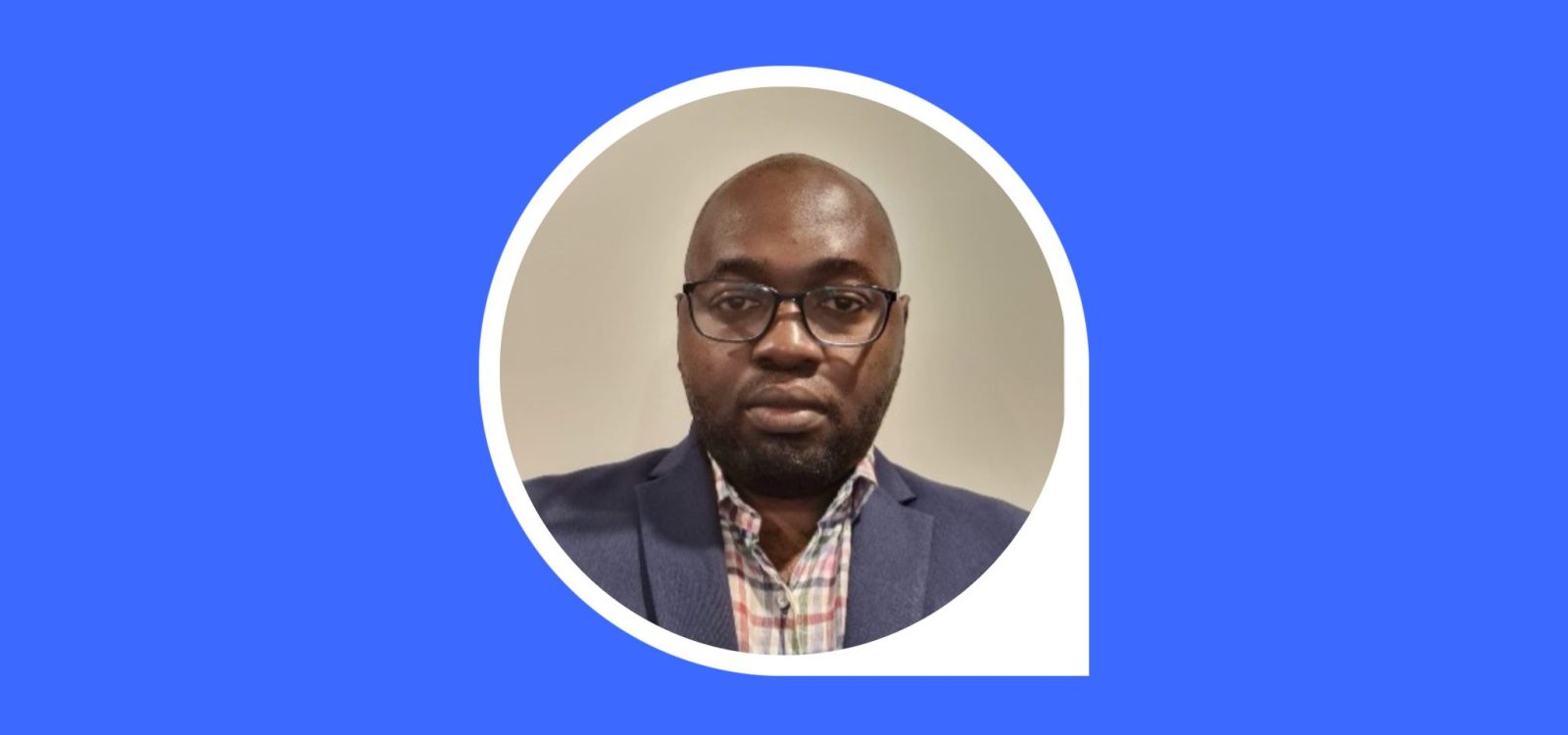
Under the Spotlight with Ivan Nye
In our latest Under the Spotlight feature, we speak to Ivan Nye, an actuary who is bringing analytical prowess to community service.
In his current role, Ivan harnesses HammondCare data to illuminate operational performance and outcomes to enhance the quality of care for the elderly.
Tell us about yourself?
Ivan: I’m Ivan Nye. I am the second of four boys. My mother is a judge and my father, who was a former soldier, is now a pastor. I am also the father to a lovely boy.
Where are you from?
Ivan: I was born in Yaounde, Cameroon but grew up in Douala, Cameroon.
Why did you choose to come to Australia?
Ivan: My wife at the time was working in Australia, so I decided to leave my position on Cameroon to join her. Looking back, it was a very challenging decision that required me to think a lot about my future and what my next field of work should be.
What and where did you study?
Ivan: I studied Engineering in Information Systems from a multinational school in Dakar, Senegal.
Later, I decided to pursue an MBA at Wuhan’s Central China Normal University. It was an eye-opening experience and gave me a different perspective in terms of experience and life.
Tell us about the current company you are working for.
Ivan: I began working at HammondCare in 2019. HammondCare is a Christian not-for-profit organisation with more than 5000 employees. HammondCare has a long history of caring for and supporting people in need as we believe that every person matters.
With an ageing population, the aged care sector is expanding quickly, as well as the need for quality of care. The quality of care provided at HammondCare has led to a surge in demand, and the company now operates in four states with the most recent facility opening in being Daw Park in Adelaide, South Australia.
Despite being a challenging sector, revenue continues to grow, and it is now sitting well above $400 million AUD (annual report 2023).
Can you provide an overview of your role and responsibilities at HammondCare?
Ivan: My job is to give a 360-view of overall operational life as well as probable or possible outcomes.
This includes understanding the request from the client ¾ our colleagues ¾ and working on the ETL (Extraction, Transformation and Loading) from the source, either a vendor or a system. I then connect the raw data to our data warehouse and report on design and data modelling.
I also run seminars on how to best use our current reports as well as managing all the maintenance and requests around our data visualisation platform.
What led you to your current position at HammondCare?
Ivan: Honestly, I was not specifically interested in the aged care sector and knew very little about it. But when I researched Hammond Care, I discovered that my values were aligned with the organisation.
Initially, I was hired as a contractor. It was very challenging and was centred around migrating all written attendance documents to another system quickly while maintaining a very high level of accuracy. I was successful and, later I was offered the position of Business Intelligence Analyst.

Delving into the aged care sector
Can you share some interesting facts about the aged care sector?
Ivan: I think the most important thing to know is how each of our tiniest contributions can make a difference in people’s lives. Did you know that:
- The homecare market is set to grow tremendously in the coming years ($4.3B in 2022 to $8.9B by 2030). This follows the projected number of users aged 85 and over, which will grow from 515,700 in 2018–19, to more than 1.5 million by 2058.
- The workforce in the aged care sector is dominated by women (more than ¾).
- People aged 30 years old or less tend to move a lot between companies in the sector, which leads to a high attrition rate. This is true of the service industry in general.
Can you share some of the prominent challenges faced by this sector today?
Ivan: In my experience, some challenges I have noted include:
- High attrition
- Tight labour market
- Constant investment in data reporting and data literacy
- Changes in the funding model that lead to the closure of many residential facilities and a continuing consolidation and merging of aged-care providers.
What ways does data play a role in improving aged care services and outcomes at HammondCare?
Ivan: All organisations collect data, but the real challenge lies in its storage and reporting.
Through reporting, we were able to discover new trends especially related to our workforce, including FTE, analysis of leavers and starters, attrition/retention and financial reporting (packages, ANACC (Australian National Aged Care Classification funding model) etc.). All reports are ready on-demand.
Another great opportunity is that we’ve maximised learning reporting. The ability to check and report on course completion has led to better visibility.
Having evidence-based reports aids in the decision-making process across the organisation.
How do you share these insights with the organisation?
Ivan: We use focal points as gateways between our team and business units. The focal point oversees specific reports and interacts with stakeholders inside the business unit about any issues or changes they need.
Periodically, we extract usage reports and review the apps to make sure they are consistent with the needs of managers and stakeholders. All new insights are freely distributed among stakeholders, from the board to management, making it easy to review any KPIs.
What are your typical data challenges?
Ivan: Data literacy remains the biggest challenge, which most companies in the aged-care sector face. Another challenge is the limited resources available for companies to invest in their data infrastructure, lack of affordable pricing from providers as well as the complexity of data available in the sector and the ability for integration.
The future of data in aged care
 Looking ahead, how do you envision the role of data evolving in the sector? How should we be prepared for these changes?
Looking ahead, how do you envision the role of data evolving in the sector? How should we be prepared for these changes?
Ivan: The role of data has become more and more critical for business decisions.
In the upcoming years, I believe that unique user ID, telehealth and remote monitoring, predictive analytics for preventative care and continuous learning and adaptation will becoming important.
Here’s why:
- Unique user ID: Enable users to be able to follow their journey inside fully integrated aged care companies, both vertically and horizontally.
- Telehealth and remote monitoring: With an aging population scattered across Australia and a scarcity of healthcare workers, Telehealth will become a standard way of providing medical consultations, especially for remote and elderly patients. Remote monitoring devices will gather real-time health data, enabling timely interventions.
- Predictive analytics for preventative care: Physicians can take steps to prevent chronic disease by recognising early signs and risks through big data collection. We should prepare by developing robust data analytics capabilities within aged care organisations, collaborating with data scientists and analysts to develop predictive models, and ensuring ethical and privacy considerations are central to data analysis efforts. This will lead to person-centred care plans.
- Continuous learning and adaptation: Ongoing training for healthcare professionals will keep employees updated on data-related advancements. Ultimately, fostering a mindset of adaptability and innovation will help organisations to embrace new technologies.
What do you see as the future challenges in aged care?
- Changing demographics: The ongoing aging population has become a tremendous challenge. This, coupled with the immigration policy means that in the next 50 years, we will need completely different architecture capable of providing services to a complex group. How do we use the available data to enable targeted healthcare depending on the ethnicity.
- Staffing issues and high attrition: As mentioned above, aging population will remain the main challenge in the foreseeable future. The economic situation of Australia will also play a huge role in the industry as pay remains challenging. One solution to this issue is to “enable retirees or older people to come back from retirement” (Mike Baid. Daily telegraph 02/11/2023). In the light of an increasing demand, targeted immigration Could potentially serve as an additional remedy for an issue that impacts us all.
- Rapid digital change: As we have seen in recent events, cybersecurity remains the biggest threats faced by the industry. The need for all employees to be digitally literate and aware of the new threats evolving every day has become critical: communication and openness are critical. There is also an increasing need to make sense of the data at hands. New tools and architecture like copilot, ChatGPT, fabric… will change the way we collaborate, interrogate and exchange data. The whole industry needs to invest heavily in training and be open to new ventures.
CPD: Actuaries Institute Members can claim two CPD points for every hour of reading articles on Actuaries Digital.






